Are all Waldorf teachers asked to describe Waldorf education “in a nutshell” as often as I am? I suspect so. One of my esteemed colleagues, Nancy Foster, a veteran teacher who taught at Acorn Hill Waldorf Kindergarten in Silver Spring, MD even wrote a book entitled In a Nutshell, answering parents questions about Waldorf education.
Even though it’s a nearly impossible task, given the muti-faceted nature of Waldorf education and the almost-too-many-to-name aspects that differentiate a Waldorf classroom from the educational mainstream, I did my best to give a “nutshell” picture of a Waldorf early childhood program recently for the wonderful crafting blog, Wee Folk Art. Here it is, reprinted in its entirety, with thanks to Kimara for asking such great questions that were a pleasure to answer!
Interview with Sarah Baldwin of Bella Luna Toys
By Kimara – Originally posted at Wee Folk Art on 14 February 2010
Kimara: In a nutshell, what distinguishes a Waldorf classroom from a more traditional educational environment?
Sarah: There are so many facets and layers to Waldorf education that it is nearly impossible to describe it in a neat, tidy package, even though I am frequently asked to do so! Since I am an early childhood teacher, I will highlight three of the key elements that distinguish a Waldorf early childhood classroom from that of a more mainstream preschool.
A homelike environment with an emphasis on natural materials
A Waldorf kindergarten is typically furnished to look much like a home, with silk curtains, wool rugs, a rocking chair and wooden tables and chairs. Teachers consciously choose playthings for the classroom that will nourish a young child’s senses, and sheathe them in beauty. Toys found in the classroom are made from natural fiber and materials to nourish a young child’s senses.
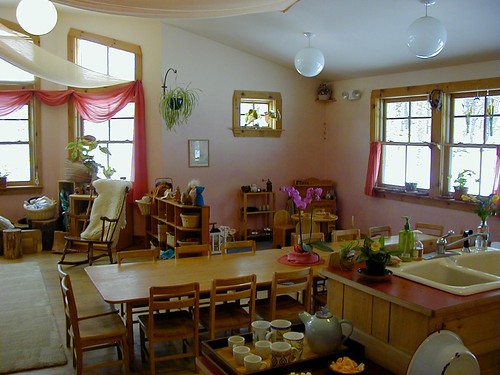
Real work for a real purpose
Waldorf teachers model meaningful, purposeful work in the classroom by engaging in activities such as cooking, cleaning, baking, sewing or knitting. Outdoors, teachers may be found raking, gardening, filling birdfeeders or shoveling snow. Out of imitation, children engage in, and help with, all these activities. The children are learning real life skills, as they become confident and capable helpers.
Imagination and Play
Rudolf Steiner, the founder of Waldorf education, emphasized the importance of the imagination in childhood, and Waldorf educators believe that imaginative play is the key to creative thinking later in life. In a Waldorf early childhood classroom, ample time is allowed each day for unstructured, imaginative play without a lot of adult interference. This is when an observer might see children becoming cats and mice; witness tea parties in the play kitchen; boys and girls building large structures out of Waldorf wooden playstands draped with large silks; building with stumps and natural tree blocks; and other children donning capes and crowns to become princesses and princes. One might say that free play is the heart of a Waldorf kindergarten morning.
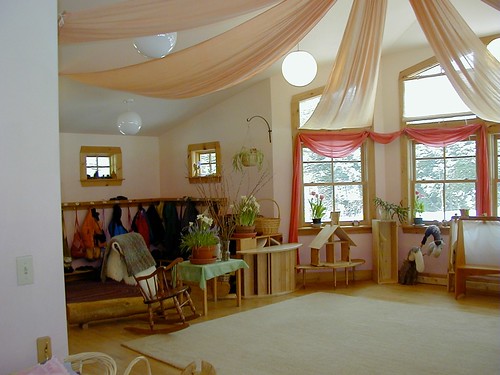
Kimara: How can parents bring the Waldorf philosophy into their homes?
Sarah: Waldorf teachers work consciously with the idea of “rhythm.” We talk about the rhythm of the day, the rhythm of the week and the rhythm of the year. The daily rhythm is a regular, predictable schedule. An example would be a morning that starts with free play, which is then followed by cleanup, circle time, rest time, snack time, outdoor time, story time and lunch. This daily rhythm would be the same all year long without variation. Once the children become familiar with the rhythm, they relax into it and benefit from the predictability of the day. They feel confident and secure, knowing exactly what to expect. Children can be become quite anxious when their days are irregular and unpredictable. So one important thing parents can do is to bring more rhythm into their home. Have regular times for meals, bath and bed, and add little rituals to each of these activities.
Another thing parents can do is to bring reverence and ritual to the family meal table. Even if you are not religious, take a moment to light a candle and say a verse of gratitude for the food you are about to eat. One can thank God, or simply thank the sun and the rain for producing the food. What’s important is to cultivate a sense of reverence and gratitude in your children. And, of course, eating meals together as a family!
Kimara: Before the birth of your first child, you were pursuing a career as an actress. How were you able to utilize that training in the Waldorf classroom?
Sarah: Before my son Harper was born, I was working as an actress, but even then I had been thinking about going to back to school to become a teacher. At the time, I thought of this as a career change. However, after I discovered Waldorf education, with its emphasis on storytelling, puppetry, singing and reciting verses, I came to think of it as a career progression. Not only did those artistic skills lend themselves to my work as an early childhood teacher, but it also allowed me to be quite comfortable “performing” in front of parents when I taught Parent/Toddler classes. I felt like I was still performing, but now for a higher purpose and for a much more appreciative audience!
Kimara: I know I’m asking for a very condensed explanation, but implementing the Waldorf philosophy, what are the attributes parents should look for when crafting or purchasing playthings for their children?
Sarah: One exercise I used to do with parents in my classes during a parent evening on “toys and play” was to blindfold them*. Then I would hand them different toys. Some were typical toys from a modern child’s toy box, such as Barbie dolls, action figures, metal trucks, plastic baby dolls and so forth; alternating with toys from our Waldorf classroom, such as shells, stones, sanded pieces of wood or dolls made from cotton and wool. I would ask each parent to feel the toys, smell them, and even taste them, if they dared! (Because all babies WILL put toys into their mouth.) I urge you to try it. Even when blindfolded, this exercise will really “open your eyes” as to how children experience toys with all their senses. The experience of touching cold metal vs. warm wood, or the different qualities between a plastic doll and one made of natural fibers can really be appreciated when not relying on one’s sense of sight.
Rudolf Steiner once described the young child as a “wholly sense organ.” That is, a child’s senses are much more sensitive than an adult’s, and her experience of the world relies less on sight alone. A child takes in the whole world through all of her senses, so we want to choose toys that are going to nourish and feed the senses in a healthy way. Furthermore, toys made from natural fibers and materials seem to have a calming quality, which can be observed in children’s play.
Another thing parents should look for are toys that will inspire and ignite the imagination, and toys that are open-ended (that is, toys that can be played with in a variety of ways). They should look for playthings that are not too formed and fixed, that leave some room for the imagination. For example, Waldorf dolls usually have minimal features, and Waldorf puppets typically have no face at all. This allows a child to imagine the face happy, sad or angry, and to develop his inner picturing abilities.
Kimara: What role do you think parents should play in their children’s creative expression and play?
Sarah: In general, Waldorf early childhood teachers do not directly engage in play with the children. Children, left to their own devices, are usually so much freer in their imaginations and richer in their play than we are as adults! As teachers, we work alongside the children as they play — sewing, preparing food, or the like. We work, we hum, and we watch. A parent can stimulate a child’s imagination by providing the kinds of playthings that invite creative play, and even nudging a child’s imagination if she seems stuck. For instance, a child may start throwing blocks. We can take the blocks and pretend now that they’re teacups, inviting the child to have a tea party with us, thereby guiding the play into a new direction.
Kimara: Given the fact that most of us are dealing with limited resources, what do you think are the basic toys or supplies we should have available for children, and when creating a “Wish List”, what items in your shop would have to be on the list?
Sarah: A parent needn’t spend much to provide a rich array of playthings for a child. At least half the playthings in my classroom were either gathered from nature or handmade. A basket of shells, a basket of smooth river stones, and branches cut up and sanded into natural blocks were among the toys I considered essential.
That said, what comes to mind as other essential items, which can be bought or handmade, are:
Play Silks. A basket of brightly colored silk squares can be used in an endless variety of ways. They become scarves, capes and skirts; they can swaddle a baby; they become tablecloths; a blue silk becomes a river; a green one, a meadow. They are also lovely for decorating a “nature table,” or draping a puppet play. The quality of the silk makes the colors shimmer, and feels heavenly next to a young child’s skin.
A Waldorf Doll. Both boys and girls would take turns caring for the “babies” in our classroom. The Waldorf 16″ dress-up doll is often what’s most readily recognizable as a Waldorf toy. These dolls are best for 4- to 6-year olds who have the fine motor skills to be able to dress them and comb their hair. For younger children, a bunting doll, such as our Cuddle Doll, is soft and huggable, perfect for toddlers; and a Blanket Doll is a wonderful first doll for a baby, with a human face that babies respond to, but with a soft blanket body, which often becomes a special “lovey.” All these dolls are made with natural fibers and materials with cotton knit skin and stuffed with wool.
Playstands and Play Clips. These are also classic Waldorf toys that are found in virtually every Waldorf kindergarten classroom. With two playstands, long pieces of silk or cloth, and a couple pairs of play clips, children can build houses and forts. They use the shelves to play “store,” or as a stage for puppet plays. They have an endless variety of uses, and are used heavily by the children every day.
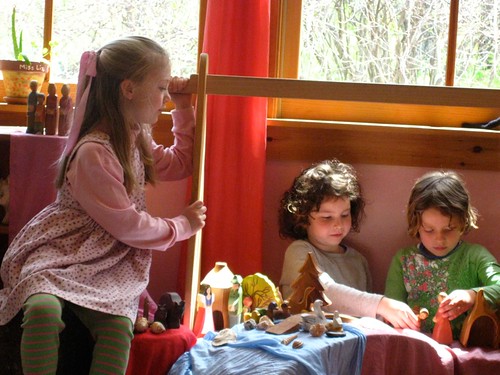
A Play Kitchen Corner. The most popular spot in my classroom, year after year, was the play kitchen–a corner blocked off by two playstands. In the cozy corner was a wooden play stove, a small table set with wooden dishes, chairs, and doll cradles. During free play, this area was always bustling with tea parties, cooking, caring for babies, setting the table and washing. Here, the children would imitate the work of the adults in their company.
Kimara: On a rainy afternoon, what is your favorite way to while away the hours with children?
Sarah: My favorite rainy day activity is one we ONLY did on rainy days. (That is to say, torrentially rainy days, otherwise we’d be outside!) I have an electric hot plate with a glass top that I got at a yard sale — the kind that is meant to keep food warm and doesn’t get too hot. I’d take a sheet of drawing paper and tape it to the hot plate, then invite the children, one at a time, to color with our beeswax crayons on the hot plate. The warmth would melt the beeswax, producing beautiful wax “paintings” that looked like stained glass. Afterwards, we would hang them in the windows and, once the rain ended, we would admire the way the sun would shine through them!
Kimara: Finally, what prompted you to leave the classroom and run Bella Luna Toys?
Sarah: After more than ten years of teaching full-time in a Waldorf school, I was discovering that my two teenage boys needed me as much (if not more) than they did when they were toddlers. While I’ve always felt that Waldorf teaching was my life’s calling and absolutely loved my time in the classroom, I was looking for a way to put my expertise and love for Waldorf education to use in a new way—one that would allow me to continue working to promote Waldorf education in the world, but also give me more time at home. Just as I was pondering what new direction my life might take, a newsletter arrived in my mailbox, announcing that Bella Luna Toys was for sale. Bella Luna was a well-established Waldorf toy company of which I had long been aware, and I knew its founder, Miaja (prounounced “Maya”) Rocciola through Waldorf homeschooling circles. After many conversations with Miaja, I became the new owner of Bella Luna Toys in September 2009, and the company moved from the beautiful coast of California, to the equally beautiful midcoast of Maine. I’m learning a lot, and having a ball!
EDIT: The following question was asked by one of our readers and I wanted to make sure that the question and Sarah’s answer were included for posterity in the interview.
Ashlie: This truly was an enjoyable article, but I really would love to hear more about children crafting and artistic expression. Are there “typical” Waldorf crafts and can you recommend books or websites to foster intrinsic artistic expression?
Sarah: Wee Folk Art is a great resource for parents who are drawn to Waldorf education and interested in crafting. The crafts offered here by Kimara are the kinds of things typically made by teachers and students in a Waldorf School. As I said, there are many facets to Waldorf education, and I failed to mention them all. But not mentioning the importance of handwork in a Waldorf classroom was a big omission!
All children in a Waldorf school learn handwork beginning in early childhood. Children in my kindergarten class would learn to “fingerknit” (creating a crocheted chain with their fingers) and to sew. Craft projects were created all year long connected to the seasons and festivals of the year. When children at a Waldorf school get to first grade, they learn to knit with needles, and as the years go on, they learn to crochet, embroider, make dolls and more. Much research in recent years has documented the benefits of developing fine motor skills through handwork to brain development, so the goal in teaching handwork to children is not just about the finished product!
Bella Luna Toys also happens to carry a wide variety of craft kits that come with all the materials needed and instructions to create animals, gnomes, angels, fairies and more. In addition, I highly recommend the book Crafts Through the Year that has beautiful photographs and instructions for making many seasonal Waldorf crafts connected to the seasons and holidays.
So there you have it, in a nutshell. (Albeit from a pretty big nut!)

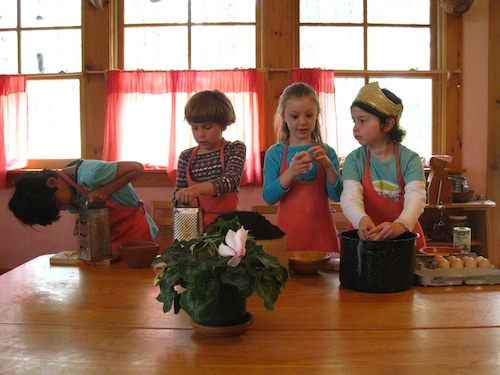

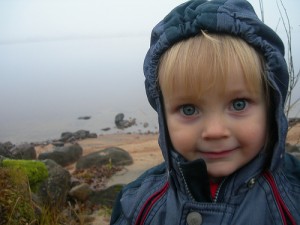
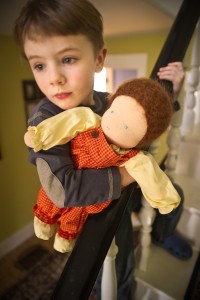
7 Comments
Beautiful!
I used to buy things from hearthsong when my children were small and they loved and played with them forever! These little wool animals and elves are such a reminder of those things. Love them!!!
I ordered many things from Hearthsong when my boys were younger, too. I recently requested Hearthsong’s catalog, and boy was I shocked at the changes! Few of the toys seemed inspired by Waldorf education as they used to be. The number of plastic toys made it indistinguishable from most mainstream toy catalogs. Strengthened my resolve to keep Bella Luna Toys a place where parents could continue to find true Waldorf toys and high quality natural toys.
[…] What Is Waldorf Education 2. Why Waldorf Works 3. Waldorf Education – a marvelous interview with Sarah Baldwin of Bella Luna Toys And here is a brief description […]
Definitely, what a splendid site and
educative posts, I definitely will bookmark your
website.Have an awsome day!
advertising
Here is my homepage: real estate Spain Catral (thelooplink.com)
[…] am also passionate about the importance of empathy in care and education, and you will notice a Waldorf Steiner influence in the resources and environment […]